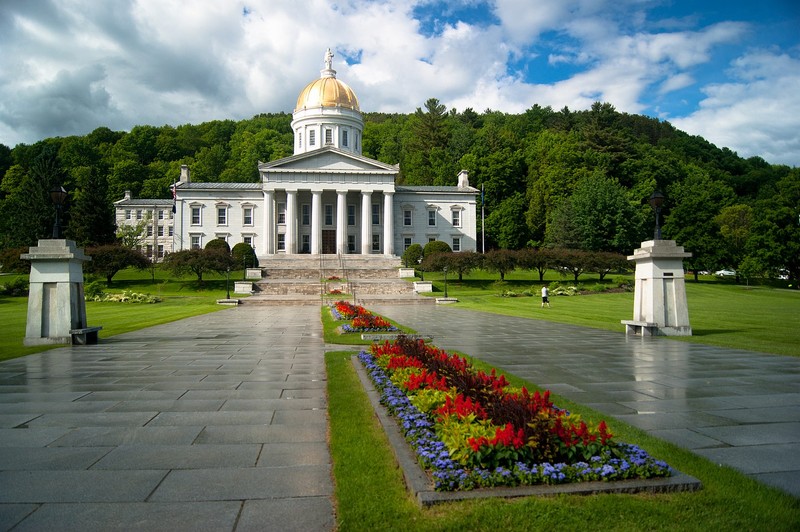Vermont State House
Introduction
Text-to-speech Audio
Images
Vermont State House

Backstory and Context
Text-to-speech Audio
The present State House, A Greek Revival structure designed by Ami Young, was dedicated in 1859 and proved to be larger than the first two structures erected in 1808 and 1833; a fire destroyed the second building in 1857. Besides housing the Vermont Legislature -- the Senate, and the House of Representatives, the State House serves as the offices for the Governor, Lieutenant Governor, Secretary of State, Sergeant-at-Arms, and Legislative Council.
Vermont entered the Union in 1791, and its legislature met in different locations each year to conduct state business. In fact, the state government met forty-seven times during a span of thirty-five years without the benefit of an official state capital. Finally, in 1805, the legislature selected Montpelier as the permanent location for which to conduct all legislature sessions upon the condition that the city would provide land for a permanent State House building; the first State House -- a wooden structure -- opened in 1808.
The state government required a new State House by the 1830s because outgrew the first building. So, in 1833, the legislature moved into a brick and granite structure, although completion of the building did not commence until 1838. The new State House accommodated state offices, committee rooms, legislative chambers, the office of the Governor, and the official state library. A fire destroyed the building on January 1857. Fortunately, a large percentage of the furniture, most of the library books, a portrait of George Washington, and most of the Secretary of State's documents were saved. Nonetheless, the fire forced the government to again build a new State House, and that is the one that stands today.
The State House opened in 1859 and with its ornate dome and abundant decor, including plenty of ornamental woodwork, cast-iron columns, and marble flooring, proved to be the grandest of the three built during the 1808 - 1859 period. Though the building showed extensive aging by the 1970s, the State House benefitted from a desire to save the building rather than replace it. Planning for a comprehensive renovation project began in 1981, which set off a nearly twenty-year restoration effort that finally ended in 2000.
When the State House opened its doors in 1859, only 32 states made up the Union, and the nation had not yet endured the Civil War. While the United States grew substantially in the 160 years since the building of the State House, Montpelier remains the country's smallest capital city. Thus, despite the innumerable changes that have occurred since 1859, the structure and the city's size have remained the same.
Sources
Paige, H. Brooks. "History of the Vermont State House at Montpelier." The World (Barre, VT). https://www.vt-world.com/history-of-the-vermont-state-house-at-montpelier.html.
Pinney, William B. "Nomination Form: Vermont State House." National Register of Historic Places. nps.gov. March 1, 1971. https://npgallery.nps.gov/GetAsset/d461f6e6-d638-488b-92cd-9717a3b369a4
"Vermont State House." National Parks Service. nps.gov. Accessed August 19th 2019. https://www.nps.gov/nr/travel/centralvermont/cv20.htm.
"Visit the Vermont State House." Vermont Official State Website. vermont.gov. Accessed August 19th 2019. https://statehouse.vermont.gov/.
By Jonathanking - Own work, CC BY-SA 3.0, https://commons.wikimedia.org/w/index.php?curid=21731245
